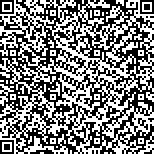|
| 引用本文: | 李萌,李秀保,顾志峰,夏景全,王爱民,刘春胜.海南岛近海砗磲(Tridacninae)资源时空变化——以蜈支洲岛为例.海洋与湖沼,2021,52(6):1521-1529. |
| |
|
| |
|
|
| 本文已被:浏览 951次 下载 978次 |

码上扫一扫! |
|
|
| 海南岛近海砗磲(Tridacninae)资源时空变化——以蜈支洲岛为例 |
|
李萌1,2, 李秀保1,2, 顾志峰1,2, 夏景全1,2, 王爱民1,2, 刘春胜1,2
|
|
1.海南大学南海海洋资源利用国家重点实验室 海口 570228;2.海南大学海洋学院 海口 570228
|
|
| 摘要: |
| 为了解海南近岸砗磲资源动态变化,于蜈支洲岛周边海域选取5个代表性站位,自2017-2020年采用断面调查的方法,开展了砗磲资源评估、种群数量变化以及其环境相关性分析等,结果显示:(1)各站位砗磲密度为0-30.00×10-2 ind./m2,且主要分布于3 m水深,在该水深区域,站位3和站位11砗磲密度最高,站位4次之,站位9和站位13最低,统计学分析表明砗磲密度与站位呈显著相关性(P<0.05)。(2)2017年,蜈支洲岛海域四种规格砗磲(壳长<5 cm、5-10 cm、10-15 cm和≥ 15 cm)均有分布,2018-2020年,未发现壳长≥ 15 cm的大规格个体。(3)尽管温度及各水质因子均与砗磲密度相关性不显著(P>0.05),水体硝酸盐NO3-浓度与砗磲密度相关系数最高(0.29)。(4)砗磲主要分布于活珊瑚底质(66.67%),其次为礁石(24.24%),砂石底质最低(9.09%)。(5)砗磲外套膜RGB颜色参数值与周边底质颜色存在相关性,空间上,站位3的砗磲外套膜RGB颜色参数值与周边底质颜色相关性高于站位11;时间上,2020年砗磲外套膜颜色与周边底质B值相关系数R高于2017年(0.899 vs.0.712)。研究首次开展了海南岛近岸海域砗磲资源时空动态变化及影响因素研究,其结果可为砗磲资源保护提供数据支持。 |
| 关键词: 砗磲 资源变动 珊瑚礁 水质 外套膜颜色 |
| DOI:10.11693/hyhz20210500113 |
| 分类号: |
| 基金项目:海南省重点研发计划项目,ZDYF2019153号;国家重点研发计划项目,2018YFD0900704号,2019YFD0901301号;海南省院士创新团队项目,HDYSZX-202011号。 |
| 附件 |
|
| TEMPORAL AND SPATIAL VARIATION OF GIANT CLAMS (TRIDACNINAE) RESOURCES IN COASTAL WATERS OF HAINAN: A CASE STUDY OF WUZHIZHOU ISLAND |
|
LI Meng1,2, LI Xiu-Bao1,2, GU Zhi-Feng1,2, XIA Jing-Quan1,2, WANG Ai-Min1,2, LIU Chun-Sheng1,2
|
|
1.State Key Laboratory of Marine Resource Utilization in South China Sea, Hainan University, Haikou 570228, China;2.The Ocean College, Hainan University, Haikou 570228, China
|
| Abstract: |
| To study the dynamic changes of giant clam in coastal waters of Hainan, a 4-year survey from 2017 to 2020 in five stations was conducted in the Wuzhizhou Island on the resource assessment, population changes, and its environmental correlation analysis of giant clams around the island using field cross-sectional survey method. The results show that the density of giant clams surrounding Wuzhizhou Island was 0-30.00×10-2 ind./m2, and mainly distributed at 3 m water depth. Significant differences were observed among sites (P<0.05). Four sizes of giant clams (shell length <5 cm, 5-10 cm, 10-15 cm and ≥ 15 cm) were found in 2017, but the ≥ 15 cm ones were missing in 2018, 2019 and 2020 surveys. The correlation coefficient between concentration of nitrate NO3- in seawater and giant clam density was the highest (0.29), no significant differences were observed between giant clam density with temperature and water quality factors. The favorite substrate of giant clams was the bottom of living corals (66.67%), followed by rock (24.24%), and sand (9.09%). There was a significant correlation in RGB color parameter value between giant clam mantle and surrounding substrate, in which the correlation coefficients of RGB values in station 3 were higher than those in station 11 in space, and the correlation coefficient of B value in 2020 was higher than that in 2017 (0.899 vs. 0.712). The temporal and spatial variation of giant clam resources in the area and its impact factors were studied for the first time, which will contribute to the conservation of giant clam. |
| Key words: giant clams resource changes coral reefs water factors color of mantle |
|
|
|
|
|
